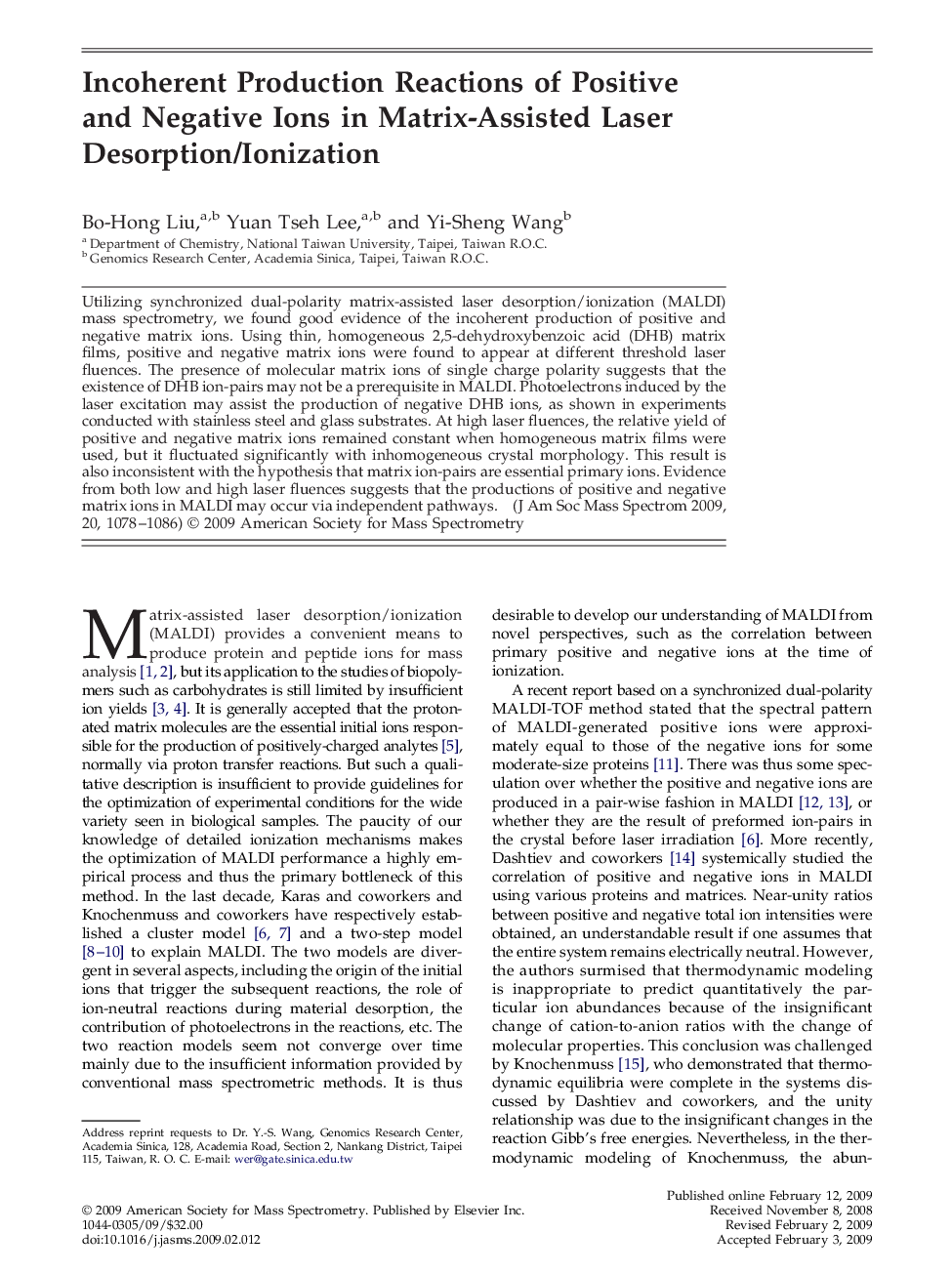| کد مقاله | کد نشریه | سال انتشار | مقاله انگلیسی | نسخه تمام متن |
|---|---|---|---|---|
| 1195281 | 964307 | 2009 | 9 صفحه PDF | دانلود رایگان |

Utilizing synchronized dual-polarity matrix-assisted laser desorption/ionization (MALDI) mass spectrometry, we found good evidence of the incoherent production of positive and negative matrix ions. Using thin, homogeneous 2,5-dehydroxybenzoic acid (DHB) matrix films, positive and negative matrix ions were found to appear at different threshold laser fluences. The presence of molecular matrix ions of single charge polarity suggests that the existence of DHB ion-pairs may not be a prerequisite in MALDI. Photoelectrons induced by the laser excitation may assist the production of negative DHB ions, as shown in experiments conducted with stainless steel and glass substrates. At high laser fluences, the relative yield of positive and negative matrix ions remained constant when homogeneous matrix films were used, but it fluctuated significantly with inhomogeneous crystal morphology. This result is also inconsistent with the hypothesis that matrix ion-pairs are essential primary ions. Evidence from both low and high laser fluences suggests that the productions of positive and negative matrix ions in MALDI may occur via independent pathways.
Graphical AbstractThe hypothesis of matrix ion pairs in MALDI was examined by using synchronized dual-polarity MALDI-TOF instruments.Figure optionsDownload high-quality image (90 K)Download as PowerPoint slide
Journal: Journal of the American Society for Mass Spectrometry - Volume 20, Issue 6, June 2009, Pages 1078–1086